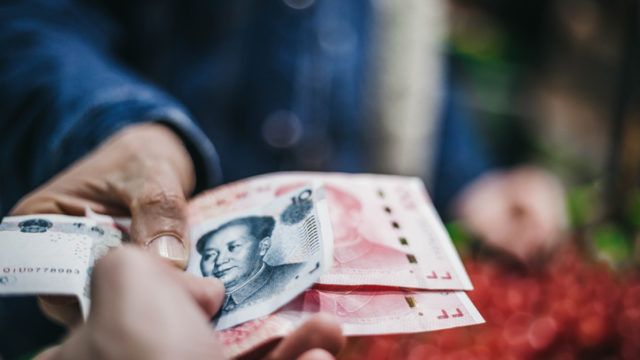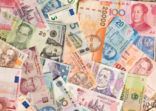There were net drawdowns of RMB 462bn ($65.9bn) from China’s mutual fund industry in the second quarter of this year, compared with net inflows of RMB 380bn during the same period in 2018, according to an industry review by Shanghai-based research firm IIC Analytics.
The most significant feature was the RMB 559bn of outflows from money market funds (MMFs), which typically receive “organic inflows”, and there were no new MMFs launched during the quarter.
“Positive expectations – paired with falling short-term yields – meant that money that has long been parked in MMFs was moved into other asset classes (or other product types completely). This culminated in one of the largest quarterly hits to MMFs, occurring across both institutional and retail segments,” noted IIC Analytics.
According to Morningstar Direct, MMFs still made up 51.6% of the total China fund industry at the end of September, but that is down from 63% a year earlier.
Although, the IIC Analytics noted that it was “too early to declare a structural shift for flows”, the figures gathered from reports filed publicly by asset managers seem to reaffirm findings from Morningstar and also Fitch Ratings.
“Falling yields have been an important driver in the decline in Chinese MMFs’ asset under management,” wrote the authors of the Fitch Report in September, who also estimated that Yu’e Bao, the MMF run by Tianhong Asset Management and distributed on Ant Financial’s payment network, Alipay, is no longer the largest MMF in the world.
Domestic equity products attract flows
The main beneficiaries of the outflows were existing equity products. Passive funds attracted RMB 71bn of net inflows, mostly to large broad-index products, continuing a 12-month trend of positive flows, according to the IIC Analytics.
ETFs managed by Southern and Harvest, linked to the CSI 500 and CSI 300 respectively, gathered the largest number of extra assets, and ETFs also occupied the other positions among the top-five funds.
Some global ETF experts expect China’s domestic ETF market to grow substantially, as institutional and global investors take a more prominent role in the country’s capital markets. In a recent interview, JP Morgan Asset Management’s head of Asia beta strategies, Philippe El-Asmar, told FSA that China’s “nascent ETF market is about 10 years behind the US in development, but on pace to catch up fast”.
Chloe Qu, Shenzhen-based manager research analyst at Morningstar, also believes that China’s regulators have been encouraging domestic managers to launch more equity products, especially index mutual funds and ETFs, with the aim of institutionalising — and therefore bringing more stability — to the domestic stock markets.
Top/bottom five passive equity funds by net flows, 2Q 2019 (RMB)
| Southern CSI 500 ETF |
+9.5bn |
ICBC Credit Suisse SSE 50 ETF |
-4.1bn |
| Harvest CSI 300 ETF |
+4.5bn |
China Universal CSI SH SOE ETF |
-1.1bn |
| E Fund ChiNext ETF |
+4.2bn |
DA Cheng China SH-SZ-HK 300 Index |
-1.1bn |
| Huatai-Pinebridge CSI 300 ETF |
+3.6bn |
Yinhua CSI Central-SOEs’ Structural Reform ETF |
-868m |
| Guotai CSI All Share Investment Banking & Brokerage ETF |
+3.5bn |
Fullgoal ChiNext Index Classified Fund |
-801m |
Source: IIC Analytics
Among funds with active equity strategies, balanced funds attracted the biggest inflows, indicating that income from was still a requirement to retail investors — in addition to riding this year’s China A-share market recovery. The CSI 300 index is up 28.96% so far this year, according to FE Fundinfo data.
Firms that saw the largest inflows as proportion of their total assets under management included BOCI Securities, Minsheng Royal and Hwabao BP, while some large firms experienced, such as GF and Bosera experienced net outflows.
“Tables turned and it was mid-league firms pulling in flows at the expense of much larger peers,” noted IIC Analytics.
The firm expects expansionary fiscal and monetary policies to continue to support demand for both active and passive equity products, while fixed income funds, including MMFs, “will continue to face headwinds in the low-yield environment”.
Top/bottom five active equity and balanced funds by net flows, 2Q 2019 (RMB)
| Invesco Great Wall Emerging Growth Balanced |
+5.5bn |
Zhong Ou Value Discovery Balanced |
-2.8bn |
| Invesco Great Wall Dingyi Balanced |
+3.5bn |
ChinaAMC Wensheng Balanced |
-1.9bn |
| China Universal Beautiful 30 Balanced |
+2.6bn |
China Universal Intelligent Manufacturing Equity |
-1.6bn |
| Orient Huixin Balanced |
+2.5bn |
Southern Ruixiang 1-year Periodically Open Balanced |
-1.5bn |
| E Fund Small/Mid Cap Balanced |
+1.9bn |
Guotai New Economy Balanced |
-1.2bn |
Source: IIC Analytics
Top/bottom five mutual fund managers by net flows as % of AUM, 2Q 2019
| BOCI Securities |
+14.6% |
GF |
-11.8% |
| Minsheng Royal |
+13.9% |
Bosera |
-8.1% |
| Hwabao WP |
+8.0% |
CCB Principal |
-8.1% |
| Invesco Great Wall |
+6.7% |
ICBC Credit Suisse |
-8.0% |
| Harvest |
+4.3% |
E Fund |
-7.8% |

















